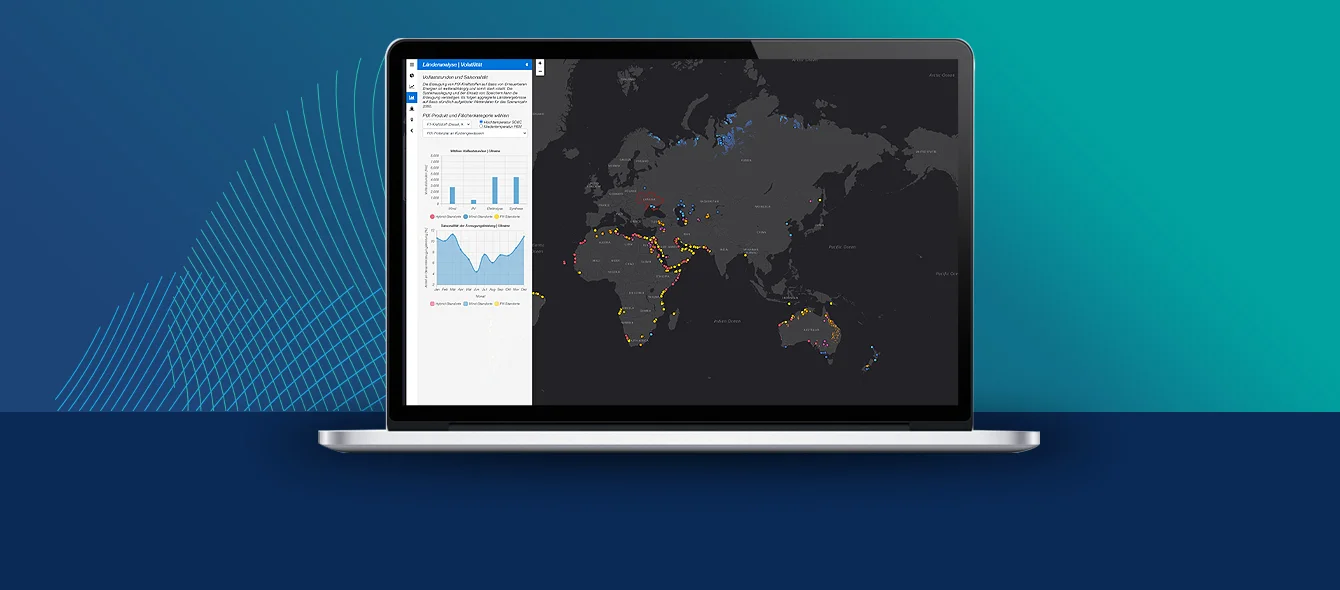The European Union aims to be carbon-neutral by 2050, and thus it is extremely important for future energy needs to be satisfied without emissions, from renewable sources. Using hydrogen instead of fossil fuels has great potential to lower CO2 emissions in areas which are difficult to decarbonise, such as industry. Consequently, Germany and other European countries are pursuing hydrogen strategies to boost the production of green hydrogen, i.e. hydrogen that is made with electricity from renewables.
However, even now as this market begins to take off, it is already clear that demand for this fuel will far outstrip domestic production sources. A recent study by the Fraunhofer Institute has identified regions outside of the EU which are suitable for siting wind and solar generation capacities and could be used for hydrogen production. The researchers have presented the results in an interactive atlas.
Mounting demand for hydrogen until 2050
In a meta-study, the Fraunhofer Institute for System and Innovation Research (ISI) analysed future potential demand for hydrogen and synthesis products based on hydrogen such as methanol and methane through to 2050. The researchers compared a total of twelve different studies, in order to simulate possible hydrogen demand scenarios for the coming decades. They came to the conclusion that demand in Germany will be strongest in the field of transportation, in particular in international air traffic and shipping, as well as in industry.
From 2030, up to 80 terawatt hours (TWh) of this fuel could be needed in Germany. Most studies, however, still forecast demand of less than 50 TWh. Nevertheless, by 2050 this demand will increase to between 400 and 800 TWh.
Potential sustainable energy production sites around the world
Large quantities of green electricity will be necessary for this. Although the development of renewable capacities is making great strides in Europe, according to scientists, even in the future energy production volumes will fall shy of enabling production of the amount of hydrogen required, while satisfying electricity demand as well. In order to meet demand for hydrogen, the EU will require imports starting in 2040, or perhaps as soon as 2030 according to some studies.
Experts are thus looking beyond Europe to regions which harbour great natural potential for renewable energy due to their available space and climatic conditions. The Fraunhofer Institute for Energy Economics and Energy Systems (IEE) analysed and assessed countries around the world to identify locations with natural conditions amenable to sustainable electricity generation. These regions are also potentially good sites for power-to-X operations, and – theoretically at least – they could be used for the production of hydrogen.
The interactive, global Power-to-X Atlas shows the locations that have the best conditions. Along with simulations for non-European power-to-X scenarios, the interactive tool offers country-specific location analyses and comparisons for wind, solar and hybrid energy sources, i.e. a combination of wind and solar power.
According to the Atlas, the biggest potential in terms of space can be found in large countries, in particular by inland bodies of water. The sunny countries in the southern hemisphere are suitable for the installation of photovoltaic generation capacities and utilising solar power. In Australia alone, more than 50,000 square kilometres (km²) of coastline areas and over 250,000 km² of inland bodies of water could be used for solar power generation. According to the simulation in the Power-to-X Atlas, up to 10,000 TWh of hydrogen could be produced if all of the potential capacity was exploited.
The United States and Russia have advantages when it comes to wind power. The U.S. in particular has large amounts of available space suitable for generating solar power as well as wind and hybrid energy. Countries in South America also have significant space available, which could be used as locations for hybrid generation.
